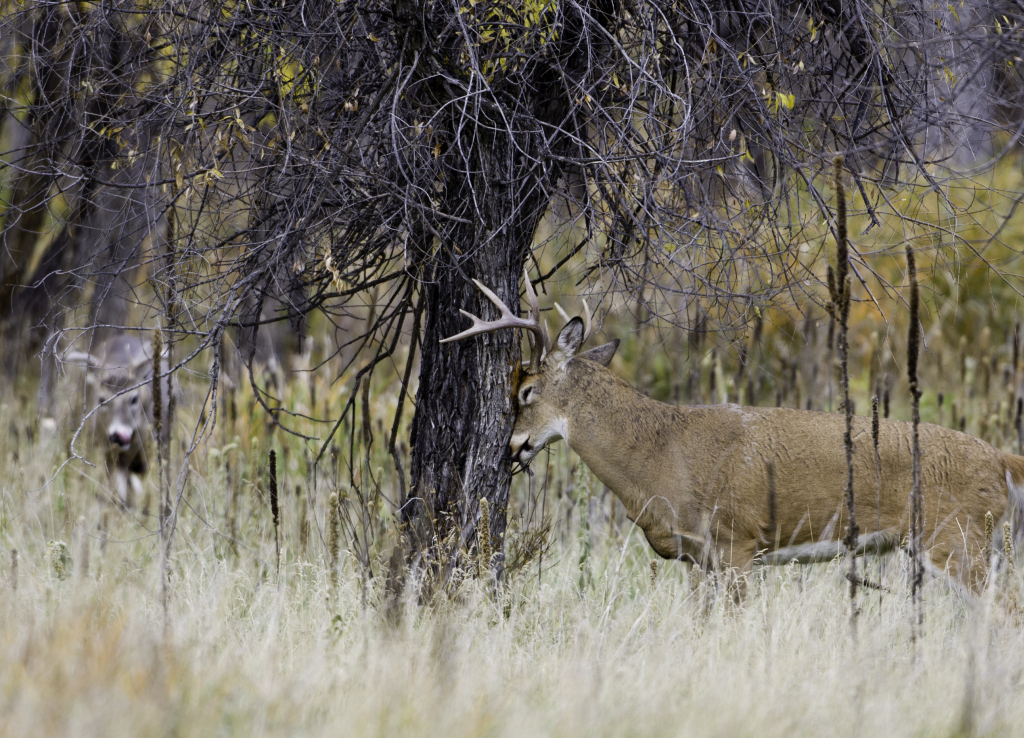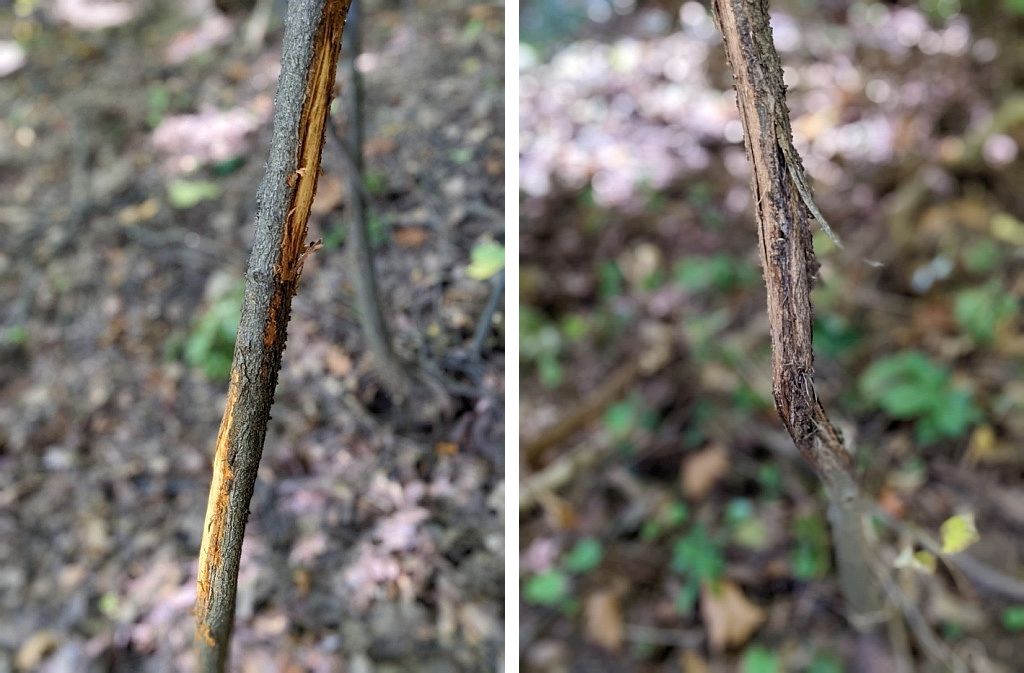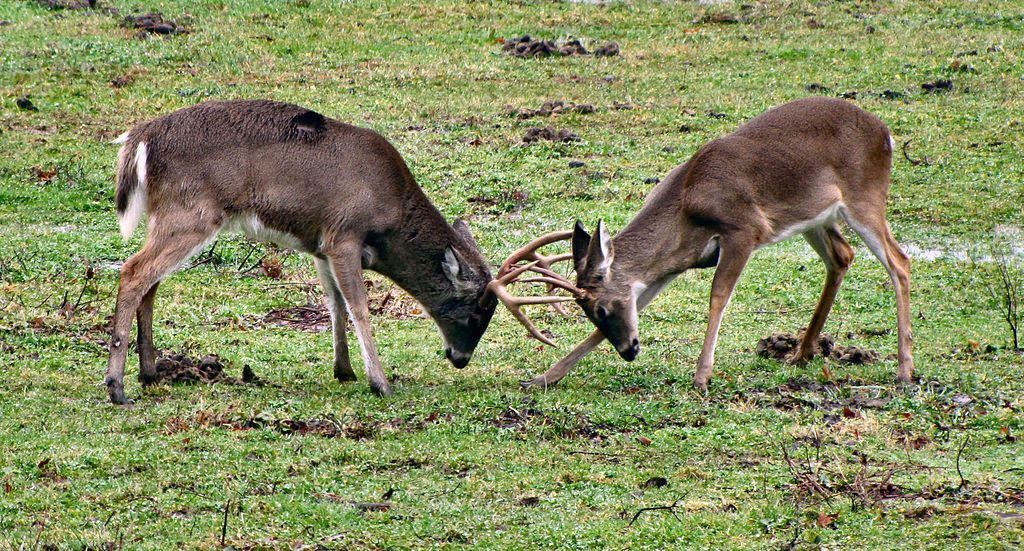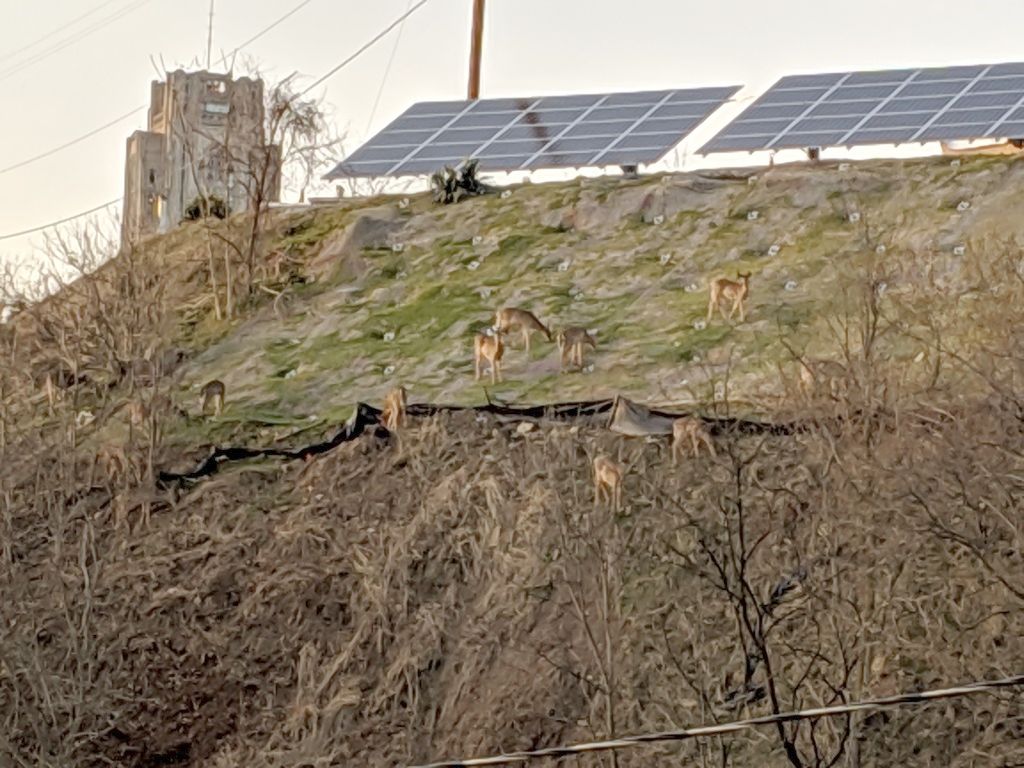
25 October 2022
If you’ve been watching white-tailed deer (Odocoileus virginianus) in the City of Pittsburgh you’ve noticed that they’ve changed their behavior since early September. Back then deer were easy find in groups during the day but now in October they seem to have gone missing. Soon — very soon — they’ll be running into traffic. All of this is part of their breeding season, called the rut, which is driven by photoperiod.
In late summer, white-tailed deer hang out in bachelor groups of adult males and matriarchal groups of does with fawns. As the rut goes through phases, described below, the dynamics change. In the city we live with so many deer that it’s good to know the phases.
Pre-Rut Phase: In late September and early October testosterone levels rise in the bucks, they rub on trees and shed velvet from their antlers. The bachelor groups break up as each male goes it alone and adjusts his home range. During this phase the bucks eat a lot, especially acorns. Once the rut begins they’ll be too busy to eat while chasing, breeding and tending does.

The buck rubs were fresh in Schenley Park on 9 October 2022. Right after this the bucks “disappeared” from the park.

Bucks also spar to settle their pecking order as shown in this photo from Tennessee. I have never seen sparring in the city parks.

Seeking and Chasing Phase: As the females begin coming into estrous the males search for and chase does in heat. The bucks move around lot, averaging 3-6 miles per day. Meanwhile doe+fawn groups break up as adult females become distracted. Watch out! They may run into traffic.
The late summer groups have already broken up in Schenley and Frick Parks. The only deer I’ve seen recently are lone females or almost grownup fawns.
Peak of the Rut: According to The Whitetail Rut in Pennsylvania, the peak in Pennsylvania lasts about five weeks, 29 October to 3 December. Their graph, embedded below, is tiny on purpose so that you will look at the original graph, including date ranges, on the Boone & Crockett Club website.
At the peak of the rut bucks make long excursions out of their home range in search of females, sometimes 10-20 miles. The peak also includes a “tending” phase during which bucks and does pair up and hide in thick cover to breed repeatedly.
Post-Rut Phase: Activity drops off precipitously in early December after most of the does have bred. Adults stop wandering and settle into their home ranges. The males still have antlers and some will search for recently-matured fawns that come into estrous (red color in graph above), but the frantic edge is gone.
When will we see deer in lazy groups again in the city parks? Wait and see.

Resources for this article:
- The Whitetail Rut in Pennsylvania, Boone & Crockett Club
- In Search of Receptive Does: What Buck Movements Reveal
- Deer hunting | Phases of the Rut.
(photos by John English, Kate St. John and Creative Commons licenses from USFW Flickr and Wikimedia Commons. Embedded graph from Boone & Crockett Club website)

Hi, Kate!
Wonderful summary.
I saw two bucks sparring around the middle of Homewood Cemetery just yesterday.
Couldn’t get the camera ready before they noticed me. Color me sad face.
Again, I’m going off-topic. A new bird species found in Western Pennsylvania. See this write-up:
https://www.usatoday.com/story/news/nation/2022/10/25/hybrid-bird-tanabeak-pennsylvania/10587485002/
It’s a hybrid tanager & grosbeak.
Mary Jo, Steve Gosser (discoverer of the bird) is a frequent photo contributor to this blog so when he showed his discovery on Facebook in June 2020 I blogged about it back at : https://www.birdsoutsidemywindow.org/2020/06/08/who-is-this-mystery-bird/. Steve’s photos + at-banding DNA samples were submitted for official review but it took 2 years to get the answer. Hence it’s news again in 2022.